Benjamin Livshits
Brave Software, Imperial College London
Auto.gov: Learning-based On-chain Governance for Decentralized Finance
Feb 19, 2023Abstract:Decentralized finance (DeFi) has seen a tremendous increase in interest in the past years with many types of protocols, such as lending protocols or automated market-makers (AMMs) These protocols are typically controlled using off-chain governance, where token holders can vote to modify different parameters of the protocol. Up till now, however, choosing these parameters has been a manual process, typically done by the core team behind the protocol. In this work, we model a DeFi environment and propose a semi-automatic parameter adjustment approach with deep Q-network (DQN) reinforcement learning. Our system automatically generates intuitive governance proposals to adjust these parameters with data-driven justifications. Our evaluation results demonstrate that a learning-based on-chain governance procedure is more reactive, objective, and efficient than the existing manual approach.
Stronger Privacy for Federated Collaborative Filtering with Implicit Feedback
May 11, 2021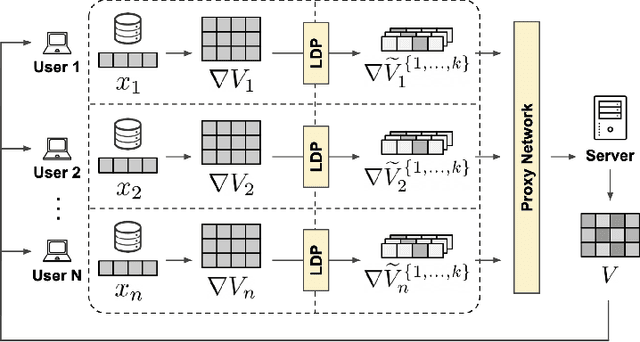

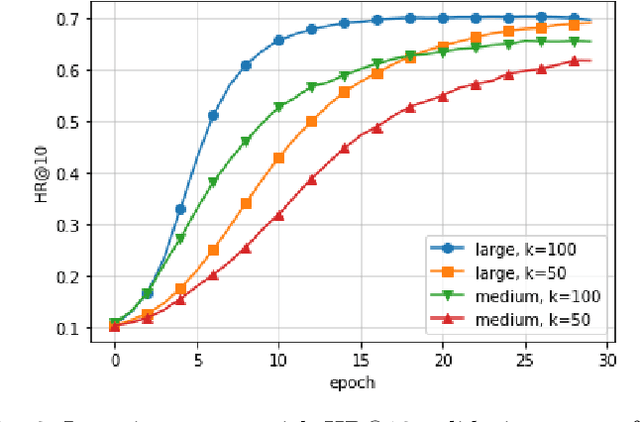

Abstract:Recommender systems are commonly trained on centrally collected user interaction data like views or clicks. This practice however raises serious privacy concerns regarding the recommender's collection and handling of potentially sensitive data. Several privacy-aware recommender systems have been proposed in recent literature, but comparatively little attention has been given to systems at the intersection of implicit feedback and privacy. To address this shortcoming, we propose a practical federated recommender system for implicit data under user-level local differential privacy (LDP). The privacy-utility trade-off is controlled by parameters $\epsilon$ and $k$, regulating the per-update privacy budget and the number of $\epsilon$-LDP gradient updates sent by each user respectively. To further protect the user's privacy, we introduce a proxy network to reduce the fingerprinting surface by anonymizing and shuffling the reports before forwarding them to the recommender. We empirically demonstrate the effectiveness of our framework on the MovieLens dataset, achieving up to Hit Ratio with K=10 (HR@10) 0.68 on 50k users with 5k items. Even on the full dataset, we show that it is possible to achieve reasonable utility with HR@10>0.5 without compromising user privacy.
Percival: Making In-Browser Perceptual Ad Blocking Practical With Deep Learning
May 22, 2019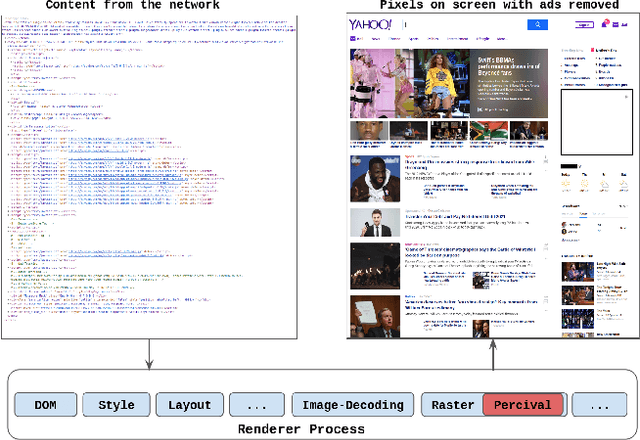
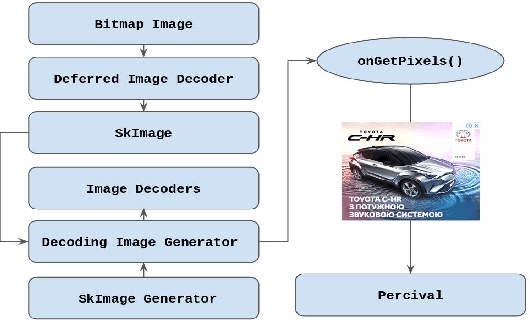
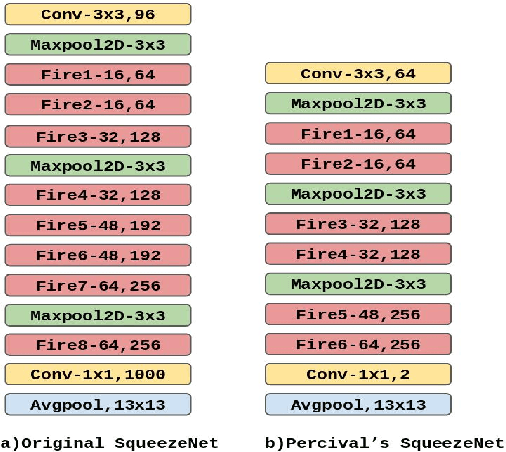

Abstract:Online advertising has been a long-standing concern for user privacy and overall web experience. Several techniques have been proposed to block ads, mostly based on filter-lists and manually-written rules. While a typical ad blocker relies on manually-curated block lists, these inevitably get out-of-date, thus compromising the ultimate utility of this ad blocking approach. In this paper we present Percival, a browser-embedded, lightweight, deep learning-powered ad blocker. Percival embeds itself within the browser's image rendering pipeline, which makes it possible to intercept every image obtained during page execution and to perform blocking based on applying machine learning for image classification to flag potential ads. Our implementation inside both Chromium and Brave browsers shows only a minor rendering performance overhead of 4.55%, demonstrating the feasibility of deploying traditionally heavy models (i.e. deep neural networks) inside the critical path of the rendering engine of a browser. We show that our image-based ad blocker can replicate EasyList rules with an accuracy of 96.76%. To show the versatility of the Percival's approach we present case studies that demonstrate that Percival 1) does surprisingly well on ads in languages other than English; 2) Percival also performs well on blocking first-party Facebook ads, which have presented issues for other ad blockers. Percival proves that image-based perceptual ad blocking is an attractive complement to today's dominant approach of block lists
The Anatomy of a Cryptocurrency Pump-and-Dump Scheme
Nov 25, 2018



Abstract:While pump-and-dump schemes have attracted the attention of cryptocurrency observers and regulators alike, this paper is the first detailed study of pump-and-dump activities in cryptocurrency markets. We present a case study of a recent pump-and-dump event, investigate 220 pump-and-dump activities organized in Telegram channels from July 21, 2018 to November 18, 2018, and discover patterns in crypto-markets associated with pump-and-dump schemes. We then build a model that predicts the pump likelihood of a given coin prior to a pump. The model exhibits high precision as well as robustness, and can be used to create a simple, yet very effective trading strategy, which we empirically demonstrate can generate a return as high as 80% within a span of only three weeks.
BLENDER: Enabling Local Search with a Hybrid Differential Privacy Model
Aug 26, 2018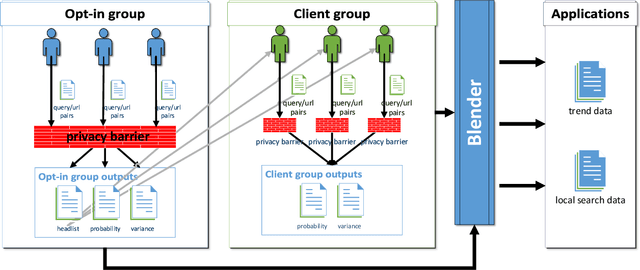
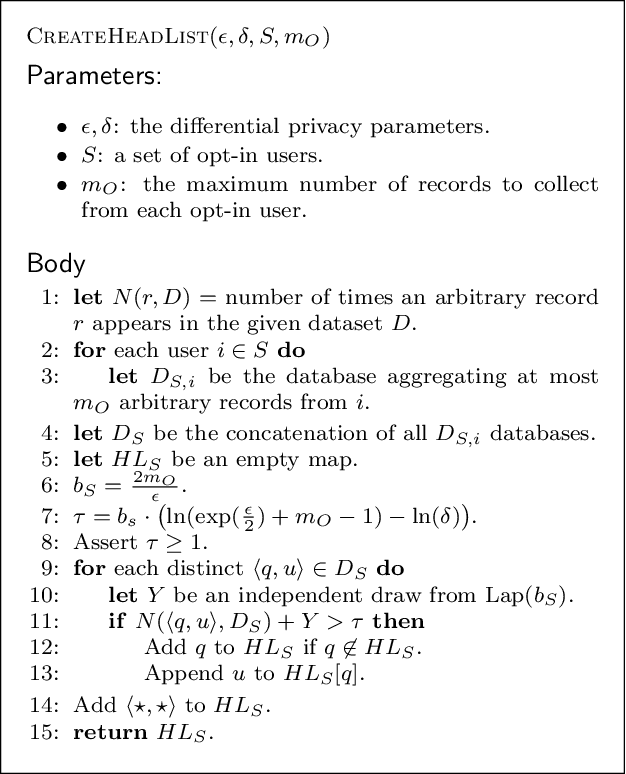
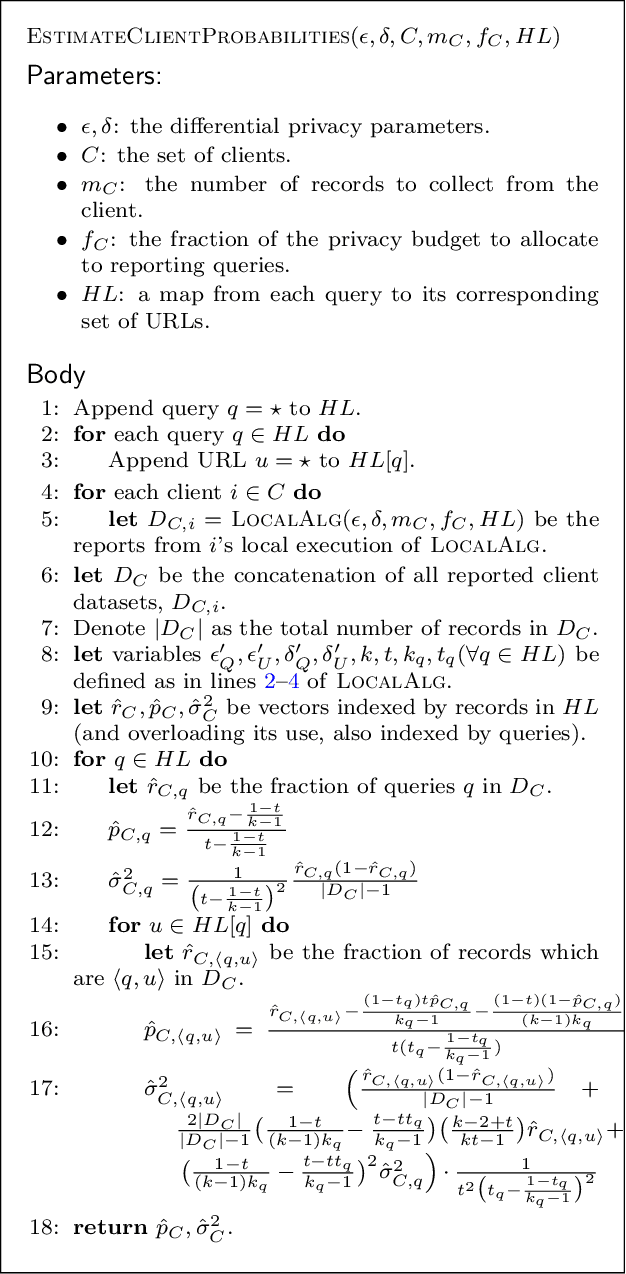
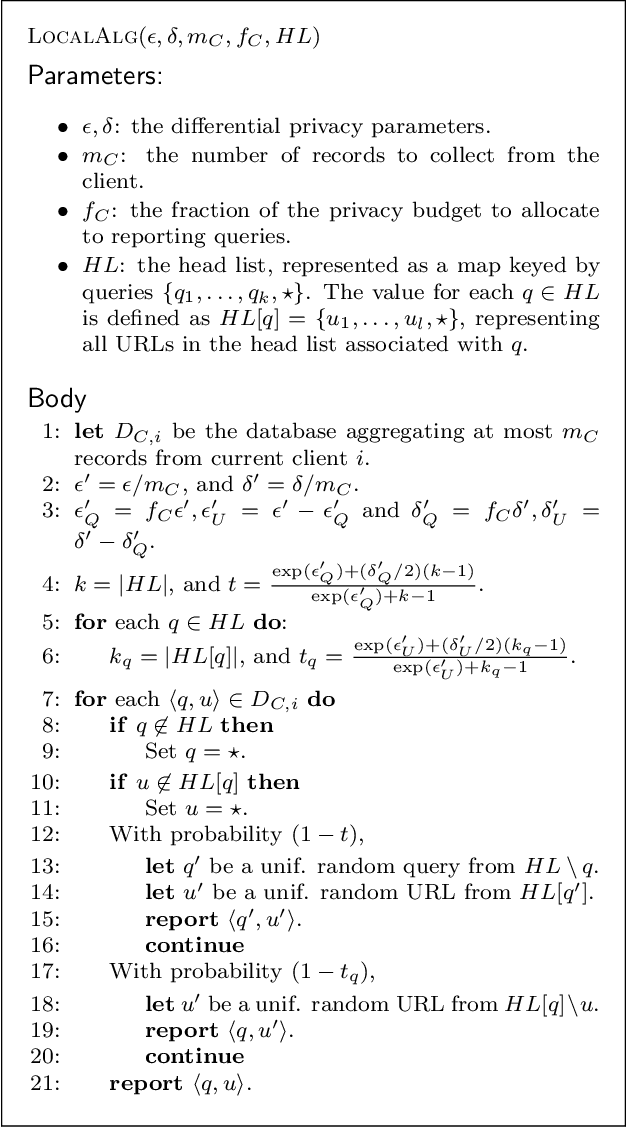
Abstract:We propose a hybrid model of differential privacy that considers a combination of regular and opt-in users who desire the differential privacy guarantees of the local privacy model and the trusted curator model, respectively. We demonstrate that within this model, it is possible to design a new type of blended algorithm for the task of privately computing the head of a search log. This blended approach provides significant improvements in the utility of obtained data compared to related work while providing users with their desired privacy guarantees. Specifically, on two large search click data sets, comprising 1.75 and 16 GB respectively, our approach attains NDCG values exceeding 95% across a range of privacy budget values.
AdGraph: A Machine Learning Approach to Automatic and Effective Adblocking
May 22, 2018

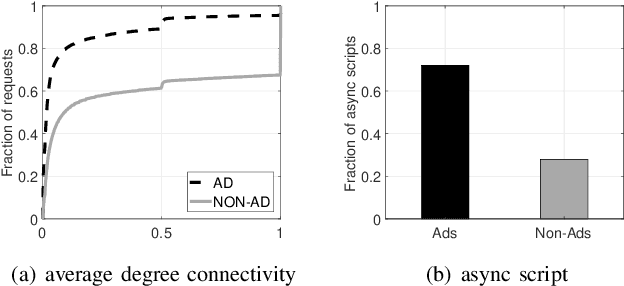
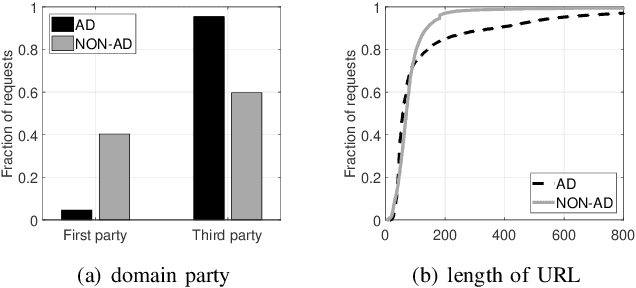
Abstract:Filter lists are widely deployed by adblockers to block ads and other forms of undesirable content in web browsers. However, these filter lists are manually curated based on informal crowdsourced feedback, which brings with it a significant number of maintenance challenges. To address these challenges, we propose a machine learning approach for automatic and effective adblocking called AdGraph. Our approach relies on information obtained from multiple layers of the web stack (HTML, HTTP, and JavaScript) to train a machine learning classifier to block ads and trackers. Our evaluation on Alexa top-10K websites shows that AdGraph automatically and effectively blocks ads and trackers with 97.7% accuracy. Our manual analysis shows that AdGraph has better recall than filter lists, it blocks 16% more ads and trackers with 65% accuracy. We also show that AdGraph is fairly robust against adversarial obfuscation by publishers and advertisers that bypass filter lists.
 Add to Chrome
Add to Chrome Add to Firefox
Add to Firefox Add to Edge
Add to Edge